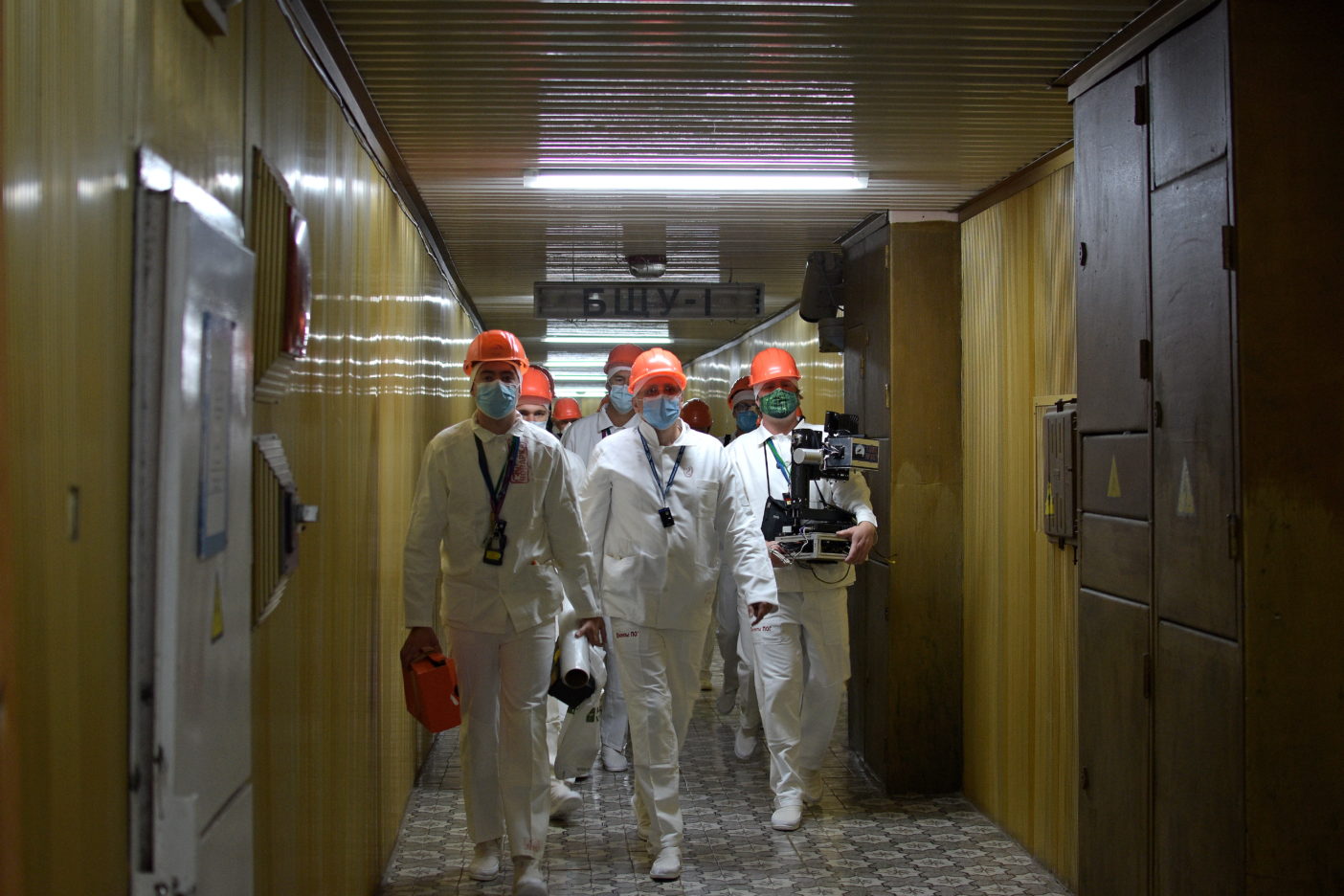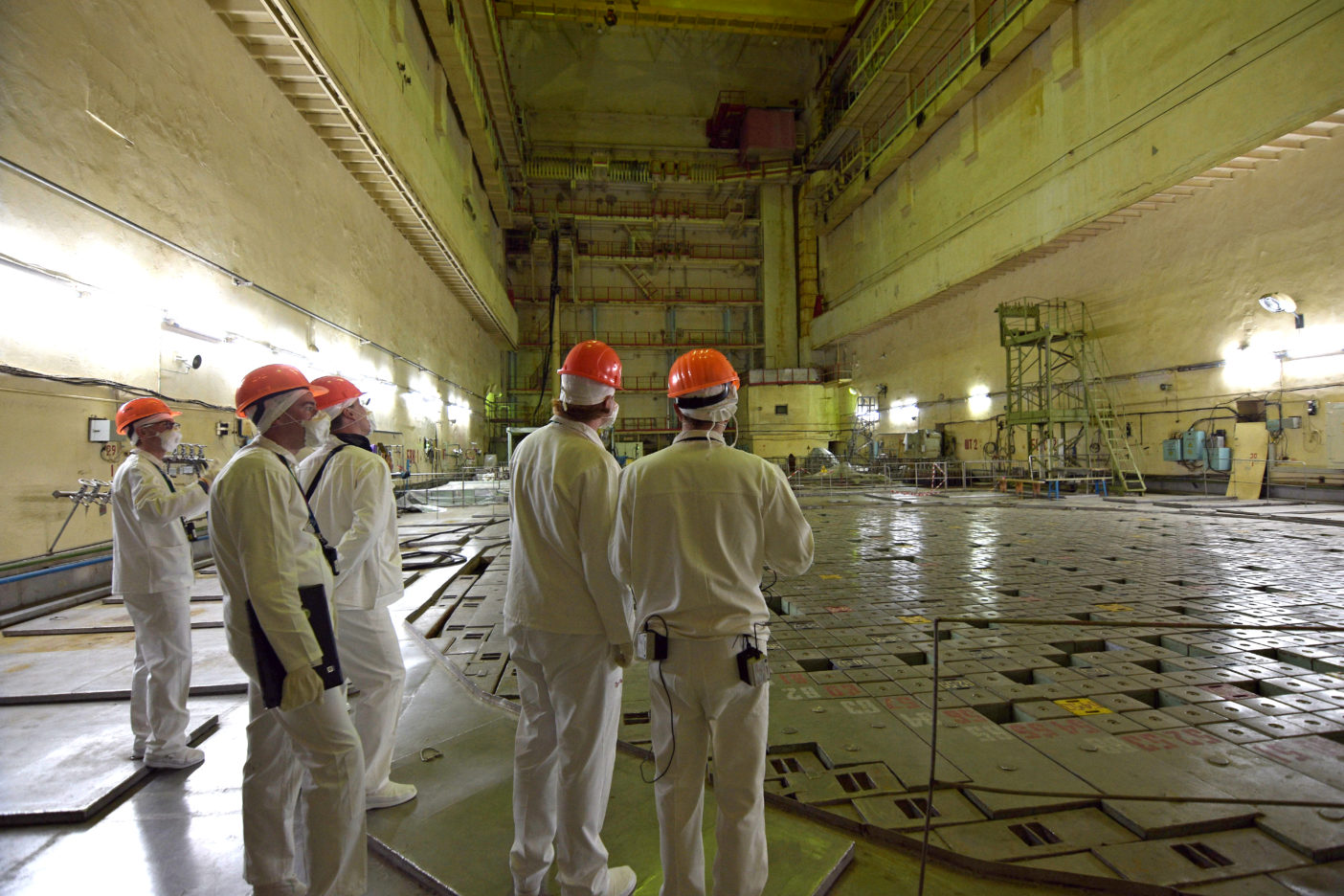Researchers from the University of Bristol recently led a project at the Chernobyl Nuclear Power Plant (ChNPP) to carry out radiation mapping research, using robotics and AI, inside parts of the damaged building.
The University of Bristol team, working with Ukrainian researchers and engineers, has been given access to the control room of Reactor 4, the epicentre of the 1986 incident, where they deployed specially developed radiation mapping and scanning sensors.
Sensors were also deployed inside the New Safe Confinement (NSC), the protective structure erected to cover the remains of the failed reactor and the original ‘sarcophagus’, which was constructed in the aftermath.
The team’s fourth visit to Chernobyl was funded by the Engineering and Physical Sciences Research Council’s Robotics and AI in Nuclear (RAIN) research consortium. It follows the signing of a Memorandum of Understanding earlier this year between the University of Bristol, the Institute for Safety Problems of Nuclear Power Plants (ISPNPP) and the Ukraine National Academy of Science.
The aim of this visit, a joint initiative between Bristol and the ISPNPP, was to further explore the value of autonomous and semi-autonomous radiation mapping systems in high-radiation environments. By deploying these systems in the exclusion zone and at the ChNPP, researchers said they were able to better define the location and amount of residual radiological hazards.

Several robotic systems, fitted with sensing equipment developed between the universities of Bristol and Oxford, were demonstrated in this latest visit. The aim of each system was to collect highly accurate 3D models of the facility, coincident with radiation data, to accurately define the distribution and severity of the radiological risks.
The team said the deployment was a significant milestone as it aims to develop new technology for decreasing risk associated with decommissioning nuclear facilities. The 3D visualisations achieved by the team’s mapping technology will aid the Ukrainian government’s dismantling project and the decommissioning of the power station.
This deployment coincides with the site gaining licensing permissions to begin remote dismantling of the sarcophagus, followed by retrievals and packaging of reactor core debris. It is expected that during the decommissioning radioactivity levels and distributions will change on a regular basis, necessitating a suite of robotically deployed scanning technologies that can quickly define how the hazard is changing – all to keep workers safe.

Lead researcher, professor Tom Scott, from the University of Bristol and co-director of RAIN, said: “To actually venture inside the control room of the failed reactor was a tense and yet exhilarating experience. The team did a fantastic job of deploying our systems quickly and in challenging conditions. It’s a huge reward after months of hard work and planning to know our technology performs well in real nuclear environments.
“This high-profile deployment was the culmination of several years of hard development work as part of the RAIN project. We’re so pleased to have successfully demonstrated a capability that is both useful for Chornobyl decommissioning but also for legacy nuclear sites in the UK and elsewhere in the world.
“We are now entering a phase of decommissioning here in the UK, at Sellafield and Magnox, therefore we are developing new sensing systems, robotic solutions and special types of detectors because that technology is needed now.”







